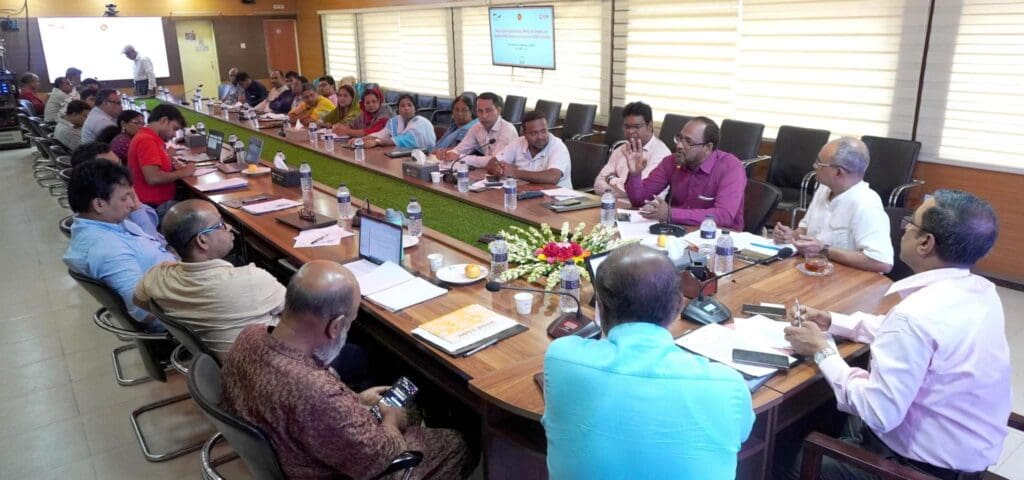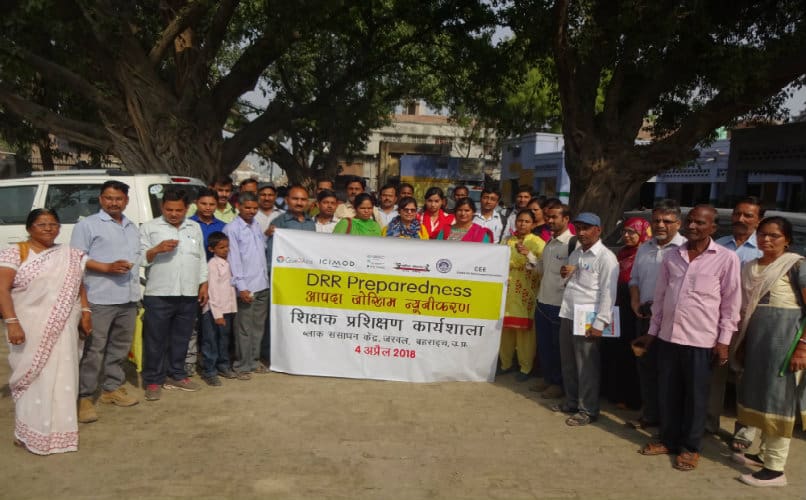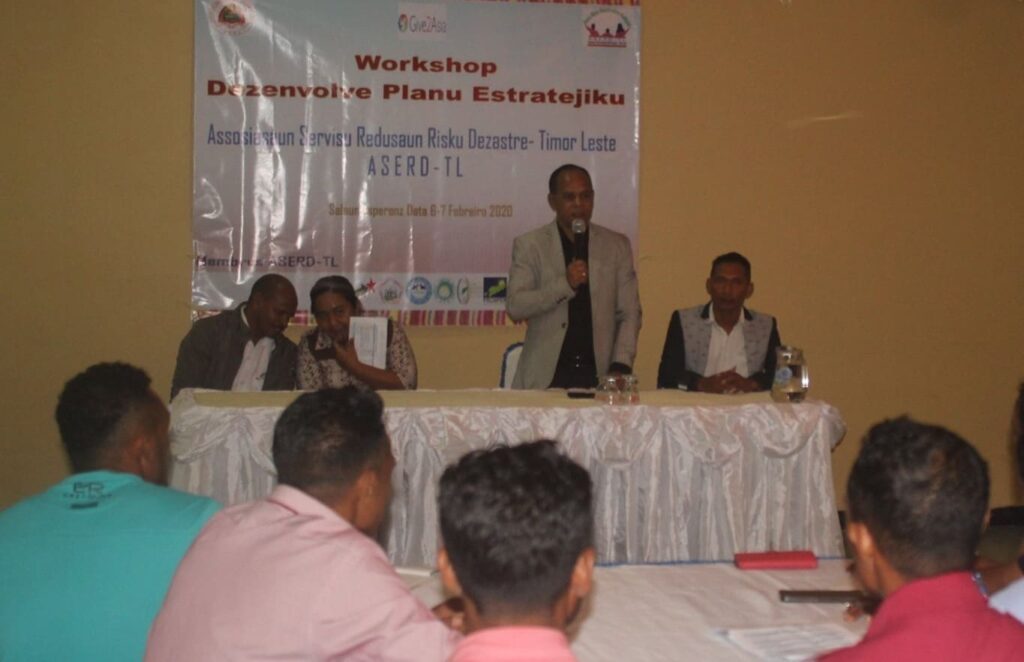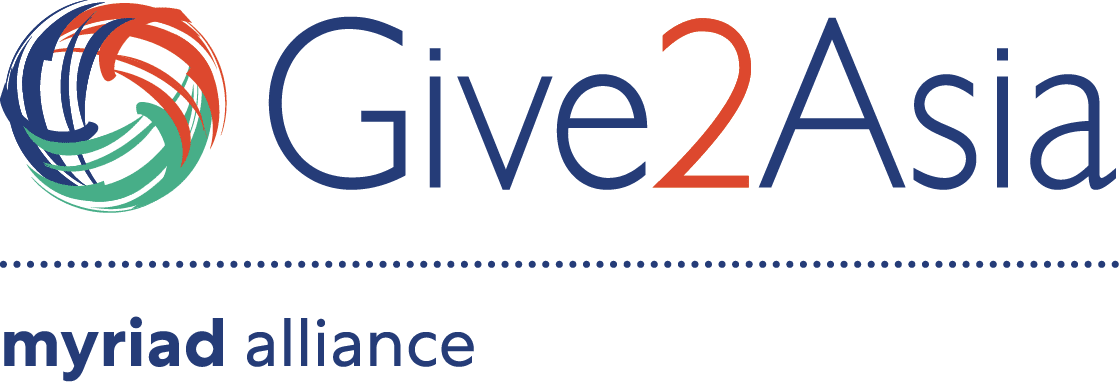In this blog, we delve into the critical role played by local non-governmental organizations (NGOs) in the realm of DRR and the pivotal role that education plays in preparing communities for unforeseen challenges.
2023 has been a busy year for Give2Asia in disaster response. From earthquakes ravaging Turkey, Syria, and Morrocco to cyclones and flooding across China, the Philippines, India and Pakistan to landslides in Japan and South Korea Give2Asia and its DisasterLink partners have been hard at work fundraising and delivering critical aid and supplies to effected communities. There is, however, another side to disaster response that is frequently overlooked and underfunded: Disaster Risk Reduction (DRR). Since October 13 is International Day for Disaster Risk Reduction it seemed like the perfect time to shed light on the fundamental aspects of DRR efforts and emphasize their increasing relevance in today’s world, where natural and man-made disasters have emerged as constant threats.
DRR focuses on both preventing the creation of new disaster risks and decreasing the ones that already exist. Disaster risk reduction serves as the central policy goal within the realm of disaster risk management. It is a proactive and strategic approach that aims to minimize the vulnerabilities of communities and nations, ensuring their resilience in the face of adversity. As our planet faces an increasing array of challenges, from climate change-induced catastrophes to the ever-present specter of pandemics, the importance of DRR cannot be overstated.
In this blog, we delve into the critical role played by local non-governmental organizations (NGOs) in the realm of DRR and the pivotal role that education plays in preparing communities for unforeseen challenges.
The Importance of Local NGOs in DRR
Local NGOs are often the first responders in a disaster, and they continue working in the community long after most foreign NGOs leave. These organizations, deeply rooted in the communities they serve, have an intimate understanding of local dynamics, cultural nuances, and the specific vulnerabilities of the area. Local NGOs have the capacity for swift mobilization during emergencies, thanks to their established networks and grassroots connections. They can rapidly disseminate critical information, provide immediate assistance, and coordinate community-based disaster responses. Furthermore, their local knowledge empowers them to design and implement DRR initiatives tailored to the unique needs of the community, effectively bridging the gap between disaster preparedness and response.
In May 2023, Cyclone Mocha made landfall in Bangladesh. A powerful tropical storm, Mocha posed significant threats to the country’s low lying coastal areas. Thanks to well-coordinated efforts of government agencies and relevant local NGOs, the cyclone’s impact was minimized, resulting in significantly less damage than initially anticipated. The Bangladesh Meteorological Department (BMD) maintained vigilant tracking of the cyclone’s approaching path, enabling timely notifications to coastal communities at risk. These alerts facilitated other actors like Give2Asia’s DisasterLink members DAM, AOSED, and BEDS to activate their advanced disaster response protocols.
Authorities and volunteers worked in tandem to educate and direct residents in high-risk areas to seek safety in designated cyclone shelters, schools, and other secure sites; fishing communities and boat operators were given multiple advance warnings to remain inland three days prior to the cyclone’s expected arrival; nearby airports had been closed; and news outlets disseminated government-released information, contributing to community preparedness and the identification of safe havens. These coordinated actions led to the successful evacuation or relocation of approximately 750,000 people in advance of the storm, reducing their exposure to the cyclone’s potential hazards.
Bangladesh’s swift response and well-executed preparedness measures minimized the impact of Cyclone Mocha on the country, emphasizing the significance of disaster preparedness and the need for sustained investment in risk reduction measures. “Despite the successful response in this instance, it is crucial to acknowledge the global funding gap for disaster preparedness and risk reduction efforts,” says Avi Rembulan, Disaster Program Manager at Give2Asia, “Disaster preparedness is a proactive approach that saves lives, protects assets and reduces the socio-economic impact of disasters. It requires consistent investment in early warning systems, infrastructure resilience, and community-based disaster risk reduction initiatives.” Local NGOs are the driving force behind building resilience at the grassroots level, making them indispensable partners in the pursuit of safer and more sustainable communities.

AOSED conference on Climate and Disaster Risk Finance and Insurance in collaboration with CARE Bangladesh
Education in Disaster Risk Reduction
Education is a linchpin in DRR, playing a pivotal role in enhancing community resilience and reducing disaster risks. Local NGOs are often at the forefront of delivering DRR education within communities. Their deep ties to localities make them uniquely positioned to understand specific risks and vulnerabilities. They organize workshops and training sessions, build awareness tailored to community needs, and advocate for resilient infrastructure and policies. DRR education can be broken into three major areas of focus:
- Awareness Campaigns: The starting point for effective DRR education. These campaigns inform the public about the types of disasters they might encounter, the potential consequences, and the actions they should take to stay safe. They serve as a wake-up call, motivating individuals to take responsibility for their own safety and that of their community.
- Drills and Simulations: Hands-on experience is a powerful teacher. Regular drills and simulations allow communities to practice their emergency response plans. Whether it’s a fire drill at a school or a tsunami evacuation simulation in a coastal village, these exercises not only familiarize individuals with necessary procedures but also build muscle memory for swift and effective responses during actual emergencies.
- School Programs: Fundamental hubs for DRR education. By integrating DRR into the curriculum, students not only gain knowledge but also become agents of change within their families and wider communities. School programs can include topics like disaster preparedness, first aid, and environmental conservation, fostering a culture of resilience from an early age.
As an example, to respond to the worsening annual monsoon-triggered flooding in India, Give2Asia facilitated a $25,000 grant to the Centre of Environment Education (CEE) in 2021 to increase disaster preparedness across nine recently flood affected villages in Uttar Pradesh. Working with more than 300 students, six teachers, and four staff members to enhance disaster preparedness and offer psychosocial care for flood-affected students, CEE trained students to spread awareness in their communities and village volunteers and youth members to act as first responders. Each village developed a ‘Village Disaster Contingency and Management Plan’ and over 200 community members benefited from climate-resilient farming and livelihood demonstrations. The project surpassed its initial goal of reaching 1,000 people, to connect with over 11,000 community members with disaster preparedness activities. Efforts are ongoing to focus on strategic partnerships, state-specific materials, and formal integration into education systems, including addressing broader issues in flood-affected areas, such as health, malnutrition, sanitation, and livelihoods.
Education is the key to informed decision-making and preparedness in the face of disasters. It empowers individuals to understand the risks they face, recognize warning signs, and take appropriate actions to protect themselves and their communities. Communities that are educated about disaster risks are better equipped to adapt to changing circumstances and mitigate potential threats, providing long-term, sustainable resiliency.

CEE DRR Awareness and Rehabilitation Event
Collaborative Efforts for Holistic Disaster Risk Reduction
In recent years, the synergy between local NGOs and educational institutions or government bodies has emerged as a powerful force in advancing holistic DRR education initiatives. This collaborative approach harnesses the strengths of both parties, extending reach and enhancing effectiveness of DRR education programs in myriad ways:
- Leveraging Expertise and Resources: By collaborating with educational institutions and government bodies, local NGOs can tap into additional resources, such as research facilities, educational infrastructure, and funding opportunities. This synergy allows for the development of more comprehensive and well-informed DRR curricula.
- Widening the Audience: Partnerships with educational institutions and government bodies enable NGOs to reach a broader and more diverse audience. Schools, colleges, and government agencies have established networks and access to students, teachers, and officials, providing an ideal platform for disseminating DRR knowledge and resources. Collaborations can also result in DRR education being incorporated into formal curricula.
- Tailoring Education to Local Context: Local NGOs often possess in-depth knowledge of the specific risks and vulnerabilities within their communities. By working with educational and government partners, they can tailor DRR education programs to address these local concerns effectively; ensuring DRR education is not just theoretical but also relevant and practical.
- Capacity Building: Collaborations facilitate capacity building at multiple levels. NGOs can train educators and government personnel in DRR best practices, empowering them to deliver high-quality education and response strategies. This, in turn, strengthens the overall resilience of the community.
- Holistic Approaches: DRR education is not limited to classroom learning; it encompasses various aspects of disaster preparedness, response, and recovery. Collaborative efforts allow for a more holistic approach, combining academic knowledge with practical training and community engagement. This multidimensional approach equips individuals and communities with a comprehensive understanding of DRR.
- Advocacy and Policy Influence: Partnerships with government bodies provide NGOs with a platform to advocate for policy changes and legislation that promote DRR education and resilience-building. By working together, NGOs and government entities can ensure that DRR remains a priority in the policymaking process, leading to long-term sustainability of DRR initiatives.
In 2019, Give2Asia played a leading role in supporting the establishment of the Association of Disaster Reduction Organization (ASERD) in Timor Leste. ASERD holds the distinction of being the first and only network of local organizations dedicated to disaster preparedness and climate resilience efforts in the country. ASERD has significantly enhanced the disaster risk reduction (DRR) capacities member organizations by delivering a comprehensive series of capacity-building initiatives. These programs not only focused on disaster preparedness and climate adaptation skills but also enhancing organizational management capacities and fostering accountability, professionalism, and sustainability.
ASERD mobilized its members to provide vital assistance to flood victims during the 2021 flood disaster, benefiting more than 20,750 individuals through the program. As the exclusive DRR network organization in the country, ASERD plays a pivotal role as a partner to the Government’s Disaster Reduction Department under the Secretary of State, actively contributing to the country’s key decision-making processes. Presently, ASERD boasts over 30 member organizations dedicated to DRR and climate change initiatives, operating across all regions of Timor Leste. It remains a crucial stakeholder in the formulation of DRR policies and the implementation of government initiatives in Timor Leste.
The synergy between local NGOs and educational institutions and governments is a catalyst for enhancing the reach and effectiveness of disaster risk reduction education. “By combining expertise, resources, and local knowledge, these collaborations empower communities with the skills and knowledge necessary to mitigate and respond to disasters,” says Rembulan, “Fostering and strengthening these partnerships will continue to be a critical strategy in building disaster-resilient societies.”

ASERD Disaster Response Training Event
Looking Ahead
Local NGOs, deeply ingrained in the communities they serve, stand as the unsung heroes of disaster response and preparedness. As we mark International Day for Disaster Risk Reduction, let’s recognize the critical role of local NGOs and the transformative power of DRR education.
We encourage you to contribute to DRR education efforts by donating to our pooled disaster preparedness fund, volunteering, or advocating for policies that prioritize risk reduction and resilience. Together, we can build a world better prepared to face the challenges of an uncertain future, ensuring that DRR remains at the forefront of our collective efforts.



